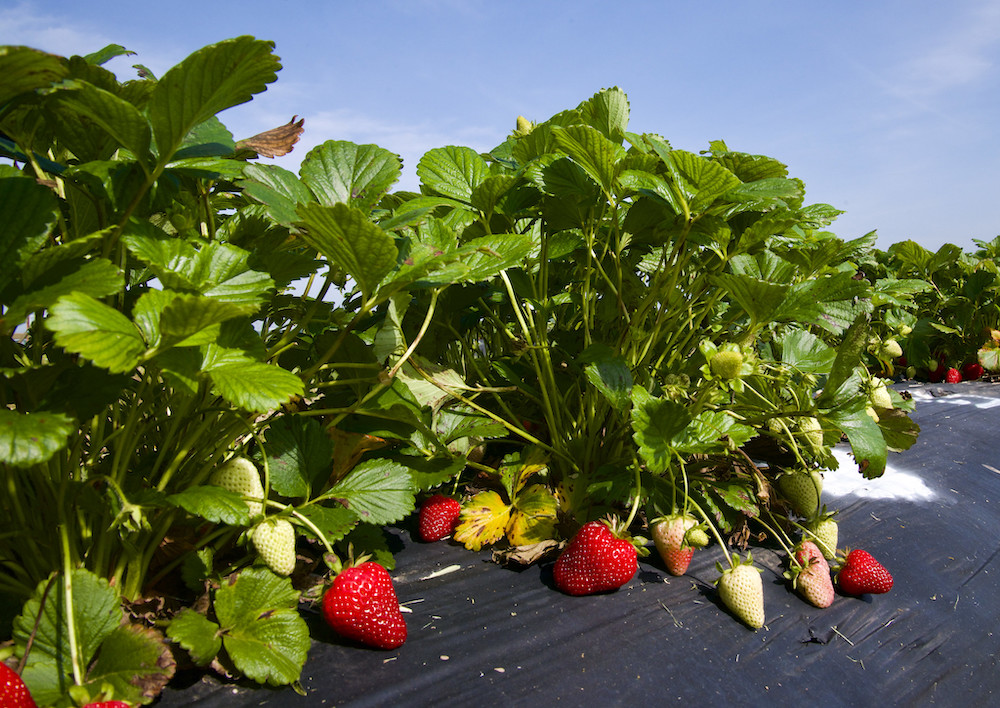FAYETTEVILLE, Ark. — Planting strawberries in the fall to get a robust crop the following spring is typical with growers. But how late is too late for fall planting of strawberries in Arkansas?
The Arkansas Agricultural Experiment Station, the research arm of the University of Arkansas System Division of Agriculture, conducted a three-year study to provide updated recommendations for fall strawberry establishment in the Natural State.
During the 2018-2020 growing seasons, researchers planted test plots of Chandler strawberry plants in late September and early October at the Division of Agriculture’s Southwest Research and Extension Center near Hope and the Fruit Research Station near Clarksville for a late planting date study.
Amanda McWhirt, assistant professor and fruit and vegetable extension specialist, said the 2018-2020 late planting date study included plots planted on what was considered “on time” — the last two weeks of September — and then a week later in the first week of October. The 2018-2020 fall weather offered “worst-case scenario” research conditions as temperatures dropped soon after planting in those years, McWhirt added.
The researchers simultaneously evaluated the use of fall-applied row covers, which could potentially help keep young strawberry plants warm enough to continue producing crowns as the air temperatures drop. Strawberry crown development in the fall is important because crowns ultimately produce flowers in the spring that develop into strawberry fruit.
“If you plant strawberries late in the fall, there might be a benefit to using a row cover to keep the plants slightly warmer, which may help them to continue developing crowns into the fall, and that may result in a slight increase in yield the following spring,” McWhirt said. “But the use of the row cover will never make up for the loss of daylight that occurred due to the late planting, even in as short of a one-week delay.”
If planted too late in the fall, there are just not enough days for the plant to establish enough crowns before the plants go dormant due to cooler temperatures, and this results in fewer flowers and fruit the next spring, she explained.
McWhirt said the late-planted treatment reduced strawberry yield 15-35 percent depending on variety and test year.
Growers must sometimes delay planting when the soil is too wet for ground preparation. For example, McWhirt said hurricanes sometimes push wet weather up from the Gulf of Mexico in the fall.
She said growers seem to be responding to the study’s results.
“I’ve seen a shift in growers thinking toward being aware that every week that they’re delayed in planting is going to impact the returns they can get the following spring,” McWhirt said. “So, they’ve tried to prioritize getting their ground prepped earlier and making sure their strawberry plant sources are contacted on time.”
Early planting study
In the fall of 2021, the researchers switched focus to finding out how early strawberries could be planted in the fall to maximize yield potential. Researchers planted strawberries each week in September and then what they considered too late — the end of the first week of October — at the Fruit Research Station and the Vegetable Research Station near Kibler. Varieties tested included Camino Real, Chandler, Fronteras and Ruby June.
Preliminary results indicate that planting too early could reduce yield potential, McWhirt said. Further analysis of the data will provide the ideal two-week window for the optimum planting of strawberries in the region.
“We are still analyzing the data, but we are starting to see that you do have the potential to plant way too early,” McWhirt said. “If you plant way too early, then the plant responds to high air temperatures and longer day lengths, so it thinks it is summer and starts making runners instead of crowns.”
Strawberry runners are horizontal stems that run above the ground and produce new “baby” clone plants at the end of the long horizontal stem.
McWhirt said she expects to release the complete data from the 2022 season in July at the annual Mid-America Strawberry Growers Association meeting.


